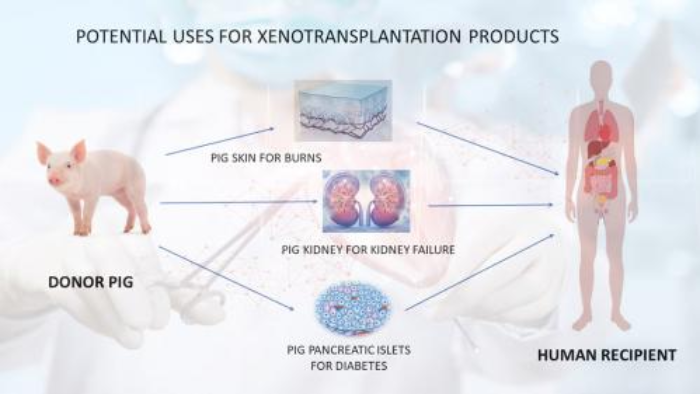Innovative Gene Therapy Aims to Transform X-linked Chronic Granulomatous Disease Care
Ensoma, a pioneering genomic medicines company, has received significant recognition from the U.S. Food and Drug Administration (FDA) for its lead program, EN-374. The FDA has granted both rare pediatric disease and orphan drug designations to EN-374 for the treatment of X-linked chronic granulomatous disease (X-CGD). This milestone paves the way for Ensoma to submit an investigational new drug application (IND) for EN-374 in the first half of 2025.
X-CGD is a rare and severe genetic disorder that severely compromises the immune system. It affects approximately 1 in 100,000-200,000 live births and accounts for 60-70% of all CGD cases. Patients with X-CGD are highly susceptible to recurrent and severe bacterial and fungal infections, often leading to chronic inflammation and life-threatening complications. The median life expectancy for individuals with CGD is around 45 years.
EN-374 represents a groundbreaking approach to treating X-CGD. It aims to deliver a functional CYBB gene directly to hematopoietic stem cells (HSCs) in vivo. This gene therapy utilizes a promoter for selective expression in neutrophils, the primary cell type affected by X-CGD. If successful, this treatment could restore patients’ ability to fight infections effectively.
Dr. Drew Dietz, Vice President of Clinical Development at Ensoma, emphasized the significant unmet medical need in chronic granulomatous disease. He highlighted that current treatments, including antibiotics, antifungals, interferon gamma, and allogeneic stem cell transplantation, offer limited benefits and often come with substantial burdens. EN-374 stands out as the first in vivo HSC-directed therapy for X-CGD, building upon a mechanism validated through ex vivo approaches.
The rare pediatric disease designation from the FDA is granted to incentivize the development of treatments for serious or life-threatening rare diseases primarily affecting children aged 18 years or younger and impacting fewer than 200,000 people in the U.S. If Ensoma’s Biologics License Application for EN-374 is approved in the U.S., the company may be eligible to receive a Priority Review Voucher from the FDA.
Additionally, the orphan drug designation, granted by the FDA to products addressing rare diseases or conditions affecting fewer than 200,000 people in the U.S., offers Ensoma potential benefits. These include up to seven years of market exclusivity after approval, tax credits for qualified clinical trials, and exemption from certain FDA fees.
These FDA designations underscore the potential impact of EN-374 in addressing the critical needs of X-CGD patients and highlight the innovative approach Ensoma is taking in developing this therapy.
Commentary by SuppBase columnist Alice Winters

Ensoma’s EN-374 represents a significant leap forward in the treatment of X-linked chronic granulomatous disease (X-CGD), a rare but devastating genetic disorder. The FDA’s dual designation of rare pediatric disease and orphan drug status for EN-374 not only underscores the urgent need for effective treatments but also highlights the potential of this innovative approach.
The gene therapy landscape has been evolving rapidly, and EN-374 stands out as a pioneering in vivo treatment targeting hematopoietic stem cells (HSCs). This approach could revolutionize how we treat genetic disorders affecting the immune system. By delivering a functional CYBB gene directly to HSCs in the body, EN-374 aims to address the root cause of X-CGD, potentially offering a more comprehensive and lasting solution compared to current symptomatic treatments.
One of the most compelling aspects of EN-374 is its potential to improve upon the benefits of ex vivo gene therapies while offering a simpler, potentially safer, and more accessible treatment option. This is crucial in the realm of rare diseases, where accessibility often poses a significant barrier to treatment.
The use of a promoter for selective expression in neutrophils is a clever strategy. It demonstrates a nuanced understanding of the disease mechanism and aims to minimize off-target effects, potentially enhancing both efficacy and safety profiles. This targeted approach could set a new standard in gene therapy development, especially for disorders affecting specific cell types.
However, it’s important to temper enthusiasm with caution. While the theoretical basis and preliminary data for EN-374 are promising, the true test will come with clinical trials. The complex nature of genetic disorders and the intricacies of in vivo gene delivery present numerous challenges that will need to be carefully navigated.
The potential market impact of EN-374 is substantial. With the orphan drug designation, Ensoma could secure up to seven years of market exclusivity, providing a significant competitive advantage. This exclusivity, combined with the potential for a Priority Review Voucher, could accelerate Ensoma’s growth and attract further investment in rare disease research.
From a patient perspective, the development of EN-374 offers hope. The current treatment landscape for X-CGD is limited and often burdensome. A one-time treatment that could potentially restore normal immune function would be transformative, significantly improving quality of life and potentially extending life expectancy beyond the current median of 45 years.
As we look to the future, EN-374 could serve as a template for developing similar therapies for other genetic disorders affecting the hematopoietic system. Its success could pave the way for a new generation of in vivo gene therapies, potentially revolutionizing the treatment of a wide range of rare genetic diseases.
In conclusion, Ensoma’s EN-374 represents a bold step forward in the field of genomic medicine. While challenges remain, the potential benefits for patients with X-CGD are immense. As the company moves towards submitting its IND in 2025, the scientific community and patients alike will be watching closely, hoping for a breakthrough that could change the landscape of rare disease treatment.



